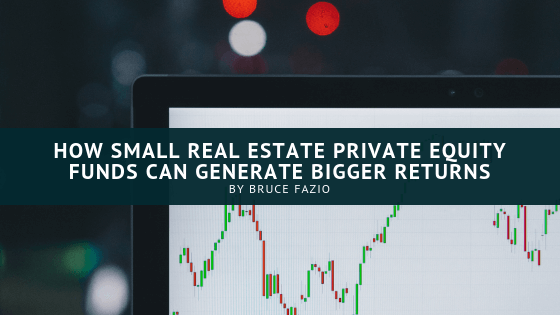When it comes to some of the big-name private equity real estate funds, it can be challenging to disrupt their world and their billion-dollar deals. However, even though these celebrated firms are bringing in large funds and scooping up trophy properties, they might not be earning the best returns on their investments. Some of the top private equity real estate asset managers like Blackstone, Lone Star Funds, and Brookfield Asset Management have mastered the art of raising capital, and there is a good reason for this.
Private equity real estate provides a refuge from the volatility that comes with public equities. Now, while these three top firms have seen great success, further analyses looking at private equity real estate funds with first investments between 2005 and 2015, big funds such as Blackstone, etc. don’t always bring in the highest returns. In fact, the average net internal rate of return for funds that had at least $1 billion in assets was 5.7%, whereas funds with $200 million or less had a net IRR of 11.2%. That being said, let’s take a look at how these smaller real estate private equity funds can generate bigger returns.
Take Advantage of Inefficiency
The private markets have their inefficiencies. For example, the lower end of the market is not as efficient as the higher end of the market which allows smaller managers to deliver real active returns on investment. These private funds that focus on the smaller deal sizes are more likely to find and capitalize on any pricing mistakes. These properties are not as obvious or as desirable to a wide range of buyers. Plus, valuations can be more subjective because they are based on local comps and market conditions and done by buyers who have different criteria and levels of expertise. Similar to politics, all of real estate is local and a major real estate fund might not have the insight on the ground to see market opportunities, not only in acquisitions but also when it comes to marketing or managing a property for better returns on investment.
The size of a real estate fund influences not only its strategic priorities but also the ability to invest capital efficiently. For example, a large fund that has billions of dollars to invest will need to rely on the platforms of other managers to distribute those funds. To achieve this, they often need to partner with regional operators to invest those large sums of money, maintain a constant deal flow and pay them—and themselves—before they pay the investors. It is the double layer of fees that cause their underperformance. When you invest with a smaller manager, you have fewer middlemen to deal with, so investors have a better chance to earn a higher return.
So, as you can see while the major private equity real estate funds have more assets to work with, that does not always translate into higher returns for the investors. There are a variety of factors that go into the process that tends to work in favor of smaller private funds which is why they are capable of generating bigger and better returns on their investments.


Recent Comments